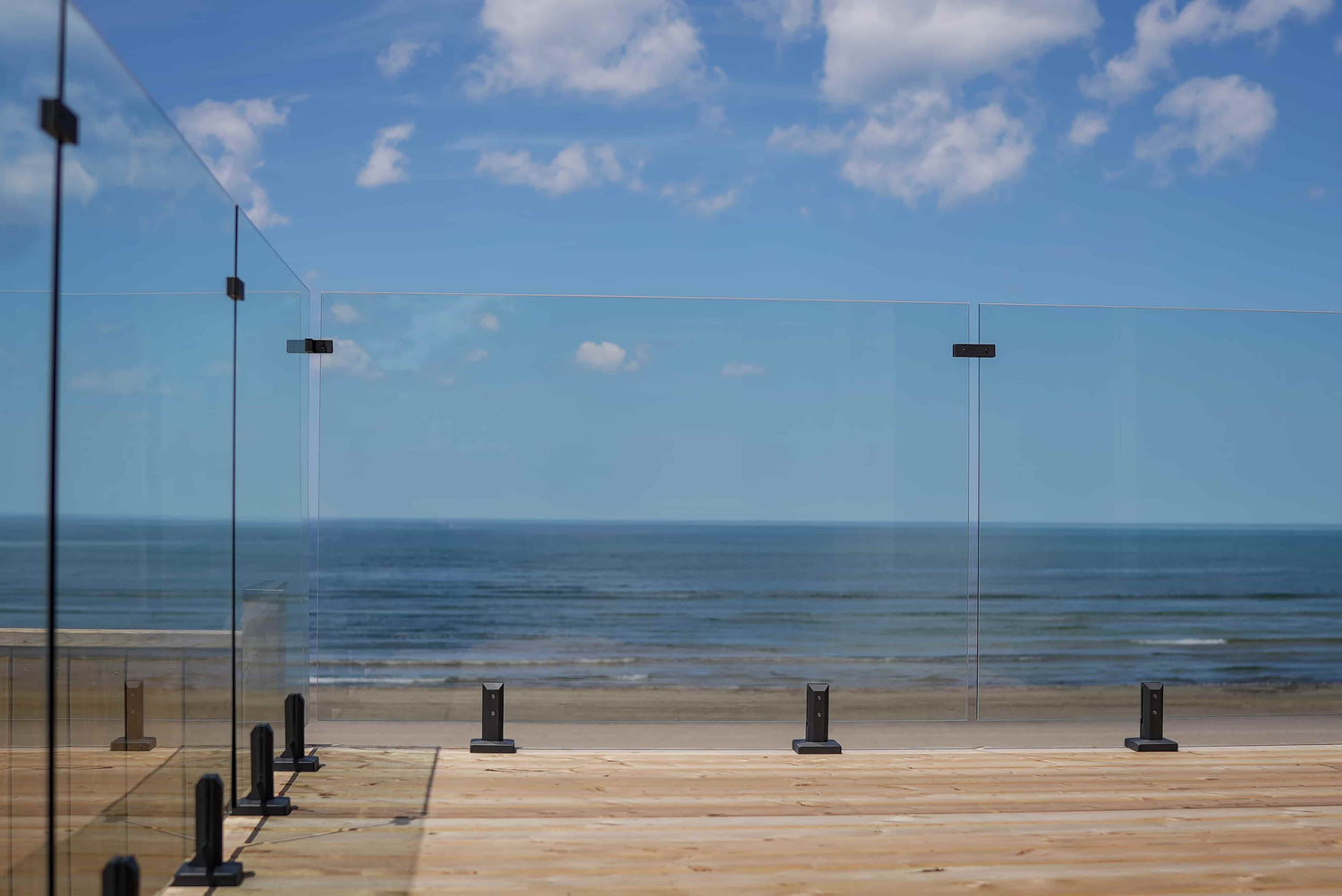New Hampshire Building Code for Glass Railings: A Complete Guide for Homeowners & Builders
In New Hampshire, where the scenery is characterized by rugged coasts, wooded mountains, and clean building styles, glass railings give homeowners a method to maintain stunning vistas without sacrificing safety. These contemporary railing systems, which are popular in places like White Mountain ski chalets and Lake Winnipesaukee beachfront residences, have specific building code requirements that must be adhered to.
Officially, the 2018 editions of the International Residential Code (IRC) and International Building Code (IBC) will be replaced by the 2021 editions by January 1, 2025, after the state started adopting them on July 1, 2024. These modifications impact the way glass railings, particularly in residential contexts, should be planned, erected, and authorized for usage.
To make sure your project is both stylish and safe, here’s what you need to know.
Current Code Adoption in New Hampshire
New Hampshire is in a transition period toward full adoption of the 2021 IRC and IBC. During this time:
After January 1, 2025, new projects are only allowed to use the 2021 versions. While towns like Manchester and Nashua may implement their own local adjustments, the rules are applicable to residential (IRC) and commercial/multifamily (IBC) structures throughout the state. For clarification, always contact the building office in your area.
You can also explore modern glass railing systems that are code-compliant and built for New Hampshire homes.
What the 2021 IRC Says About Residential Glass Railings
Guardrails are required on open-sided platforms, decks, and balconies that are 30 inches or more above grade, per Section R312 of the 2021 IRC. To avoid falls, these railings need to be at least 36 inches high. When the railing on a stairway doubles as a handrail, it should be 34 to 38 inches away from the stair nosing.
Spacing is another crucial factor. To assist lower the dangers for kids and dogs, the railing system must not allow a sphere that is 4 inches in diameter or greater to pass through.
You can verify this directly from IRC 2021 Section R312.
Glass Types and Safety Requirements Under IBC
The 2021 IBC (Section 2407) outlines approved materials and structural standards for glass railings. Only laminated safety glass or tempered glass is permitted. If you're using a frameless design with tempered glass only, a top rail is required. However, if you're using laminated glass that’s tested to remain intact after impact, the top rail may not be needed.
In addition, these systems need to pass additional uniform load tests and sustain a concentrated force of 200 pounds delivered in any direction along the top edge. In both residential and commercial applications, this guarantees strength and safety.
If you're unsure what kind of railing you need, take a look at our glass railing hardware for safe and compliant solutions. For industry-wide best practices, refer to the National Glass Association’s safety bulletins.
Mistakes That Often Lead to Violations
Some of the most common issues that trigger inspection failures in New Hampshire include:
- Installing annealed glass instead of tempered or laminated glass
- Guardrail systems under 36 inches in height
- Frameless railings without required top rails
- Overlooking regional snow or wind-load amendments
To avoid these errors, use this installation guide for the best code compliance.
Quick Code Overview for Glass Railings in New Hampshire
|
Feature |
2021 IRC/IBC Requirement |
Why It Matters |
|
Guard Height |
36 inches minimum |
Prevents falls from elevated surfaces |
|
Stair Handrail Height |
34–38 inches from stair nosing |
Ensures safe support while climbing stairs |
|
Load Resistance |
200 lbs. in any direction |
Guarantees railing integrity under force |
|
Approved Glass |
Tempered or laminated safety glass |
Protects occupants during breakage |
|
Opening Limitation |
Max 4 inches gap |
Prevents children and small items from slipping through |
|
Top Rail Requirement |
Required for tempered-only glass |
Provides structural support in failure events |
Final Thoughts
The way glass railing systems must be built has changed significantly as a result of New Hampshire's adoption of the 2021 IRC and IBC. Knowing the details of guard height, opening size, glass type, and load capacity is crucial, whether you're creating a mountainside hideaway or renovating a city house. By taking the proper actions now, residents can avoid expensive adjustments later on and, more importantly, stay safe.
Start your project off right by exploring New Hampshire-ready railing systems designed with both beauty and safety in mind.
FAQs
1. When did New Hampshire adopt the 2021 IRC and IBC?
The codes were officially adopted on July 1, 2024, with mandatory enforcement beginning January 1, 2025.
2. Can I use the 2018 codes during the transition period?
Yes, but only until December 31, 2024, if your building permit is filed before then.
3. Do local towns add extra code requirements?
They might. Places like Concord and Manchester may impose wind-load or snow-load regulations beyond the state standard.
4. Can I use frameless glass for my railing?
Yes, if it’s made of laminated safety glass or includes a top rail in the case of tempered-only glass.
5. What happens if I install a non-compliant system?
You could face failed inspections, fines, project delays, or legal liability in the event of an accident.
Let customers speak for us

Glass Railing Near You
Discover how The Glass Railing Store has been delivering exceptional service to our customers, thanks to our dedicated and knowledgeable team and their love our glass railing products.







